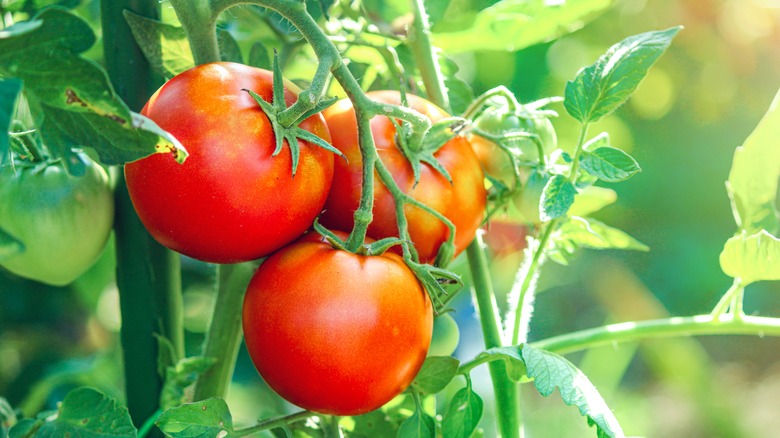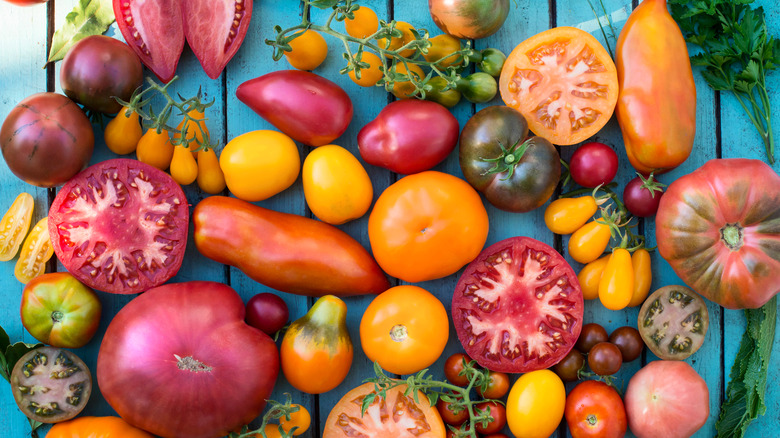Determinate Vs Indeterminate Tomato Plants: What's The Difference?
There are thousands of tomato varieties available for growing. If you're an avid lover of the plump, tangy fruit and are interesting in growing some yourself, take a moment to understand a bit more about the warm-weather crop. While there may be over 13 things you may not know about tomatoes, let's scratch one off the list so you can become a tomato connoisseur. One of the first things to know is that tomato plants come in two distinct classifications, which directly correlate to how they grow and produce fruit: determinate and indeterminate.
Determinate tomato plants are typically smaller, only growing to a certain point and are usually somewhat bushy in stature. Furthermore, the determinate plant produces fruits very quickly. This means production rates will skyrocket, then rapidly decline until they cease production within the plant's lifespan. Determinate varieties produce smaller versions (typically clusters) of tomatoes for a much shorter amount of time than indeterminate counterparts.
Indeterminate tomatoes, on the other hand, rapidly grow on a vine and will continue flourishing until the cool months when the season ends — they can even reach up to 10 feet in height. With this type of growth rate, using a trellis or supports for the plant to latch onto is a great way to help it thrive. The indeterminate kind consistently produces fruits, just slightly further apart on the plant, until frost arrives. Most types of tomato seeds that gardeners use are indeterminate varieties — up to 75 perfect, according to Martha Stewart (via YouTube).
What type of tomato plant is right for your garden?
Understanding the two types of growing patterns and styles is crucial for selecting the right tomato plant for your garden. As a general rule of thumb, if you want a high yield in a short time frame, or if you're low on overall garden space, go with determinate. When caring for your determinate tomato plant, don't prune off the off-shoots of new growth (referred to as suckers). Letting it grow upwards and outwards is key to allowing it to keep producing, since it has a limited production time. A few varieties of determinate tomatoes you may recognize are the Roma tomato, an oblong-shaped, medium firm kind with less seeds — perfect for a fresh summer salsa – and the Micro Tom tomato, grown on miniature bushels producing tiny fruit that are delicious tossed in salads or as a snack.
On the other hand, if you have room for the plant to grow and you want a more consistent, yet spaced-out production, go with an indeterminate variety. Keep in mind that pruning is necessary for the indeterminate to keep the plant healthy and lively, as it can quickly become overgrown since the crop continues to cultivate until the cold season in your area. A few indeterminate varieties include the deep-hued Cherokee purple tomato with a pleasant sweetness, the Big Beefsteak tomato(which can produce fruit that weighs up to four pounds ideal for layering on the best BLT sandwich), and the Brandywine, which is an heirloom known for its light spice and richness.


